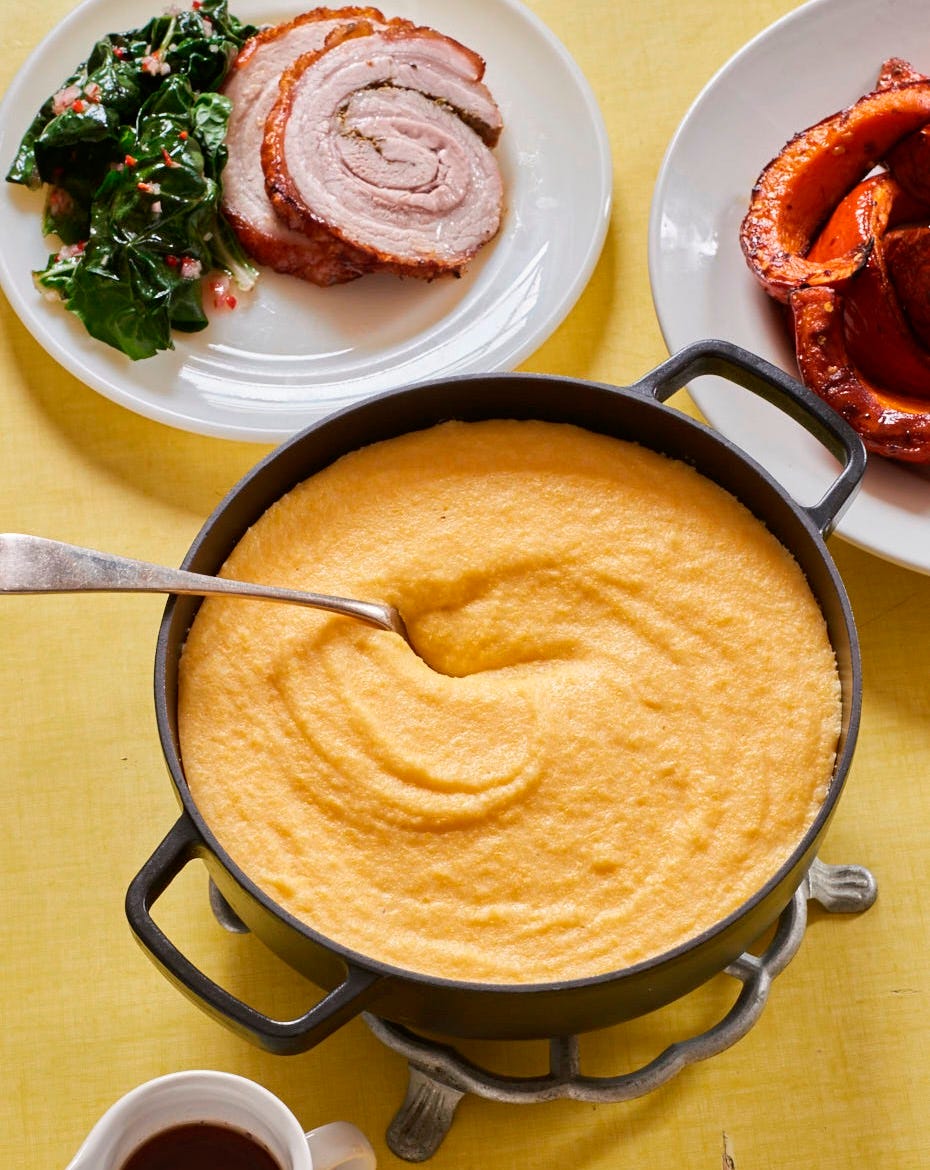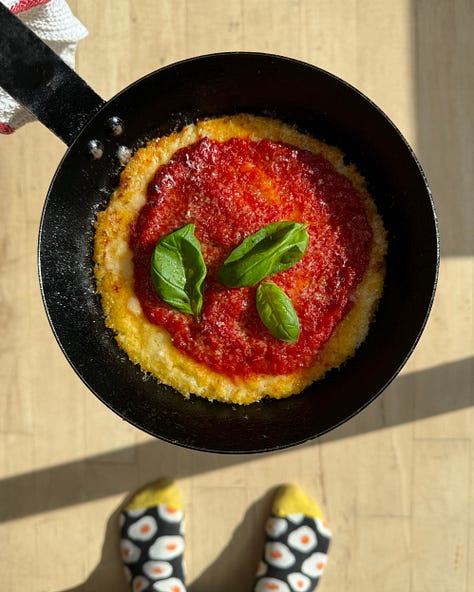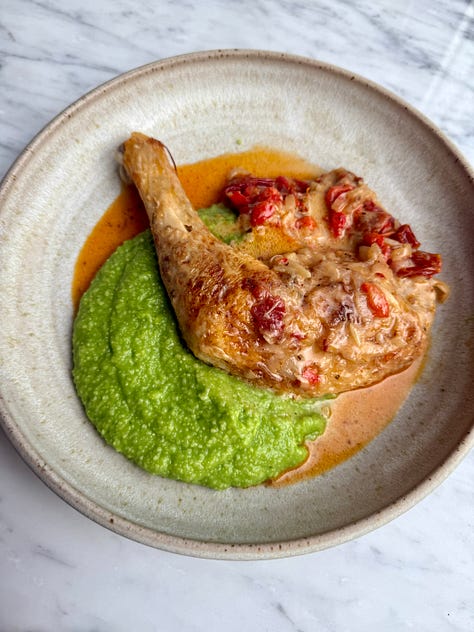Something meditative
Let’s begin this week’s post with a gentle video. It’ll take 17 seconds of your time. (Or less than 3, if you’re now conditioned by social media to scroll speedily on, should your interest not immediately be piqued).
What is it that you see? A pot of barely puttering stodge? Or a mesmerising vat of potential?
Ten years ago when writing On The Side, I submitted that “some people consider polenta boring, sloppy and pointless. My theory is those people don’t put in enough butter or cheese.”
I stand by that thought. Sort of. As in, if you’re not a fan, make it cheesy and perhaps that’ll convert you. BUT I also think the ingredient and finished article can and should be more nuanced than that.

Technically and historically, polenta is a type of porridge (sometimes stiff, sometimes sludgy) made from a wide variety of ground grains — barley, flax seed, buckwheat and more. Here, though, I’m focussing on the most common variety: polenta bramata, which is coarse ground cornmeal.
To me, now, cooked polenta is gratifyingly neutral and adaptable. It’s comforting and filling enough, yet actually remarkably light (anyone who’s been skiing in Italy will know it as the perfect mid-sport lunch; quite the opposite to vats of molten cheese served on the other side of the peaks). It’s a side that’s ideal next to slow-cooked meats and stews, rich sauces, garlicky mushrooms, fatty pork, because actually its neutrality is the perfect carrier of those things. Although, whisper it, if you stumble across good polenta and season judiciously, it does in fact have a pleasing, savoury aroma and taste…
This is the kind of side that I go for months without. But when I remember that there is a world beyond potatoes, pasta, rice and beans, I’ll binge — enjoying the fact that not only is it frequently the ideal supporting act, but also one that has chameleon-like potential (served stiff, wet, twice-cooked, gratinated, or fried as ‘chips’), and so is suited to myriad different plates, and something for all seasons, not just winter.
This week’s recipes
As I’m currently midway through a polenta binge, I thought I’d share a few of my favourite ways to cook and eat it.
These recipes don’t, as it happens, include the typical Alpine-Italian style, where the polenta is turned out already stiff and sturdy. Here’s a nice intro to that sort of thing:
Instead, there’s
Crispy yet also molten skillet polenta;
Green polenta;
Rosemary-flecked baked squares; plus
A base recipe for wet(ish) polenta, which is always my starting point.



Watch these video teasers to whet your appetite, before we dive deeper.
The rest of this week’s post, and its recipes, is for paid supporters. An annual subscription costs a smidgeon under £1 per week. For that you get 4-6 additional recipes per month, cookbook giveaways, and unrestricted access to the ever growing archive of posts and recipes (free to read posts get paywalled after a couple of weeks). And ultimately those supporters enable this publication to keep going (thank you). Join us?
Otherwise see you next week — it’ll be a #Supplemental round-up of the recipes in February’s newspapers and online. All the best, Ed.




